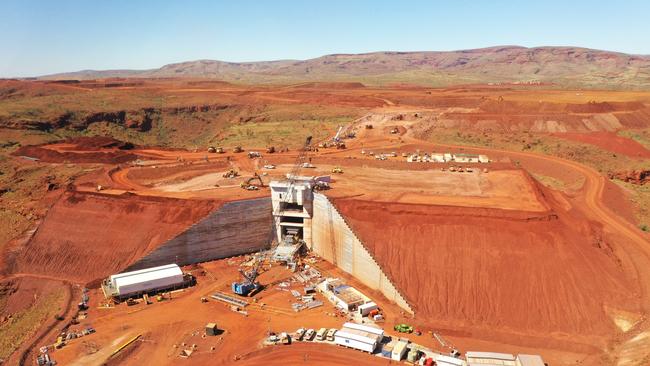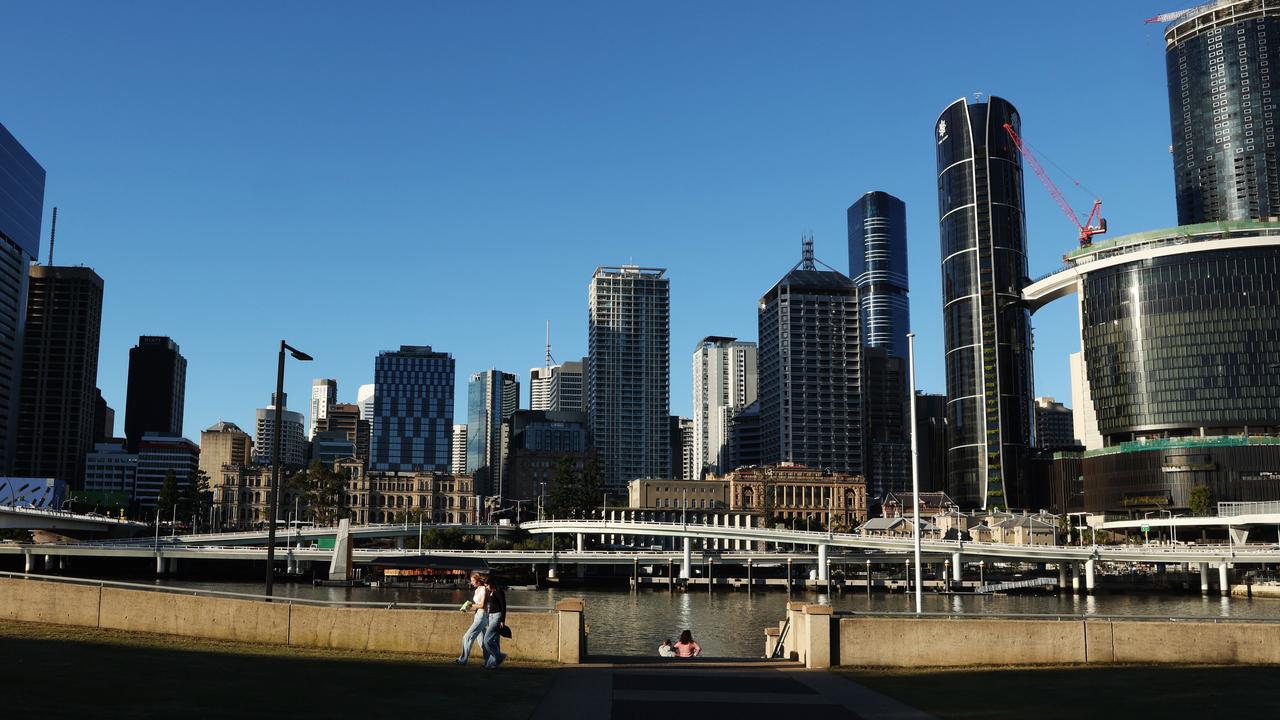Rio Tinto posts $15.4bn profit on stronger iron ore prices
The mining giant has declared a better than expected dividend as it doubled down on a bullish long-term outlook for iron ore.

Business
Don't miss out on the headlines from Business. Followed categories will be added to My News.
Rio Tinto chief executive Jakob Stausholm says he is confident the long-term iron ore price will justify the company’s massive investment round in new iron ore assets, saying he believes the company will be able to keep up its returns to shareholders despite commodity price volatility.
Rio declared a $US2.58-a-share final dividend on Wednesday after booking a full-year net profit of $US10.1bn ($15.4bn), with the result held up by a surge in iron ore prices in the second half of 2023, amid crumbling prices for some of Rio’s other commodities.
Rio booked an underlying net profit of $US11.8bn, with its statutory result undermined by $US800m of post-tax impairments to the company’s Queensland alumina refineries in the first half of the year.
The global mining giant booked underlying EBITDA of $US23.89bn, down 9 per cent compared to 2022, on revenue of $US54.04bn, down 3 per cent.
Rio’s total dividend payout for 2023 was $US4.35 — 12 per cent beneath the $US4.92 paid for its 2022 results. But despite posting the lowest earnings metrics in some years, Rio beat analyst expectations.
The company generated $US15.2bn in net cash from its operations, 6 per cent lower than in 2022. But the higher iron ore price again delivered for the mining giant, with Rio’s Pilbara operations delivering underlying EBITDA of $US19.97bn, up 7 per cent on 2022.
Analysts had expected Rio to book underlying earnings of $US11.64bn, on underlying EBITDA of $US24bn, according to consensus estimates published by Visible Alpha.
The company paid out $US1.77 in an interim dividend, and analysts had expected a $4.03 total payout for the full year.
The results come after Rio’s iron ore division returned firmly back on track in 2024, with the company hitting the upper end of its iron ore export guidance, shipping 331.8 million tonnes of the steelmaking commodity in 2023.
Rio’s iron ore shipments were up 3 per cent compared to 2022.
The mining giant maintained its guidance of shipping 323 to 338 million tonnes in 2024, only a slight increase on the previous year.
But Rio faces a period of intensifying capital spending to maintain its position in the global iron ore industry, as the company pays for its share of the giant Simandou development in Guinea and recalibrates its Pilbara operations around the Rhodes Ridge joint venture with Wright Prospecting.

Simandou will cost Rio about $US6.2bn over the next few years and, while the company is still studying the feasibility of a multi-billion dollar Rhodes Ridge development, the miner has flagged $US10bn a year in capital spending until 2026, a figure seen a likely to continue later in the decade.
Of that total, about $US4bn year will be spending needed to sustain its existing mines — including $US1.8bn in the Pilbara — with decarbonisation plans likely to cost $US1.5bn a year and replacement capital at $US2bn to $US3bn a year.
Rio plans to spend $US3bn a year on growth projects, including Simandou — and any development at Rhodes Ridge is likely to also come with a multi-billion price tag.
Mr Stausholm told The Australian he was comfortable with a the possibility of a capital spending program in the Pilbara later this decade, saying the amount of steel needed in the global decarbonisation effort should help to keep prices up.
Iron ore prices averaged $US110.30 a dry metric tonne in 2023, and $US121 a tonne in the second half of the year — surging to a high above $US140 late in the year.
BHP has said it believes iron ore prices will likely trade in the range of $US80 to $US100 for some time to come, and Mr Stausholm said the underlying dynamics of the market will help support iron ore prices.
“The cost curve starts already kicking in at about $US100 – because of the elevated prices for a period of time, volume has come on stream that is very, very expensive,” he said.
“The reason why I feel good about our business is that, both Simamdoe and the Pilbara expansion are very, very low cost — really on the left side of the cost curve. A lot of things can move around and these are still among the best assets. That’s how we convince ourselves that the risk equation is okay.”
The Guinean government and the consortia developing Simandou — Rio and China’s Chinalco for one half, and Singapore’s Winning group and a plethora of Chinese SOE’s on the other — are still to sign off on the final agreements around Simandou.
But Rio said on Wednesday that construction of the project’s infrastructure is well underway. And so confident is the company’s view on the project it partially reversed previous impairments to its share of the massive iron ore development.
Rio wrote down its holding in Simandou to zero in 2015 over the uncertainty surrounding its development amid low iron ore prices. Rio took a $US1.1bn impairment against its Simando shareholding at the time, but the company reversed $US239m — on a pre-tax basis — in its full-year accounts.
Mr Stausholm told reporters on Wednesday the company was confident that the Chinese economy would continue to support steel production despite ongoing wobbles in the country’s property sector.
“The Chinese economy that we are seeing from our company point of view is growing and it’s very robust. We saw last year that the property sector was not strong and it was contracting,” he said.
“But there were certain parts of the industry that were very strong. And there’s good underlying growth from infrastructure: so net-net, the Chinese economy is robust and it’s growing.”
Rio Tinto released its results after the close of the Australian market. Its shares had closed down $2.24 to $125.80 on Wednesday.
More Coverage
Originally published as Rio Tinto posts $15.4bn profit on stronger iron ore prices





